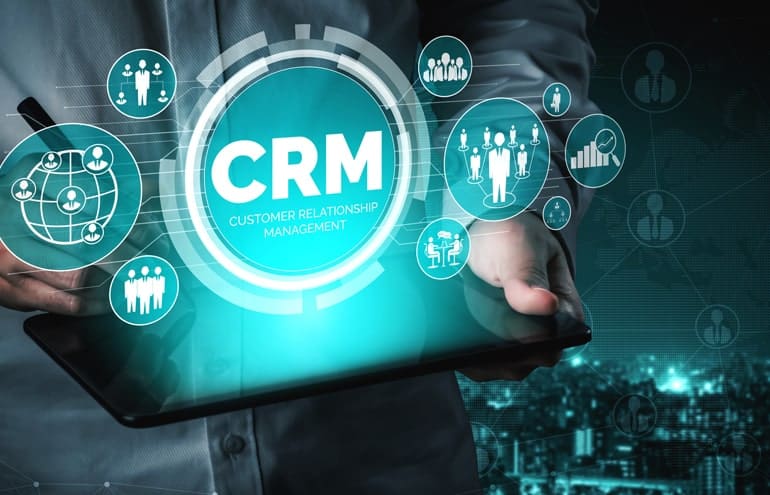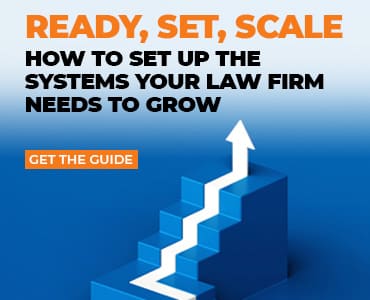A CRM system makes it easier to target your email marketing to a particular group based on a common interest or status.

Table of contents
Today, legal marketing has taken so many forms. There are lawyers on TikTok. Lawyers who dominate Google search results with SEO. And lawyers who still find success with billboards. With all the options available, you might wonder what type of marketing would be effective for your practice.
I suggest that you try leveraging an old-fashioned form of marketing and combine it with new technology.
You might revisit email marketing or, more specifically, try using list segmentation for a more targeted and personal approach.
What Is Email Segmentation?
Email segmentation is the practice of targeting your contacts based on their interests. Many lawyers send email newsletters to their contact lists or newsletter subscribers. This is not email segmentation because the newsletter typically goes out to all subscribers regardless of where their interests lie. Most lawyers send the same newsletter to former clients that they send to colleagues or referral partners. While these kinds of blast emails have their place, they are not always the most effective email marketing tool.
Email segmentation targets a specific group based on their interests. For example, your referral partners might be interested in tips on law firm operations. Your former clients, however, might be interested in follow-up advice relating to your practice area. Although you can send both groups the same information, you might find better results sending to one group based on shared common interests.
This Is Where a CRM System Can Help
A customer relationship management (CRM) system lets you load contacts into an application and organize them based on their interests. This allows you to target your marketing to a particular group based on a common interest.
I use Copper — a CRM designed for small to medium businesses that are Google Suite users — for my segmentation efforts. Copper allows me to create and save lists by contact types. For example, I have a specific contact type for potential referral sources. For me, these are attorneys who have not yet sent me a case, but I want them to in the future.
With Copper, I can send this entire group of contacts periodic emails based on what I believe to be a common interest. Perhaps it’s a simple update on my firm. Or perhaps it’s a blog article that I’m particularly happy about.
But that’s not the best part. You can drill down further with the “tags” feature.
The tags feature allows me to create custom tags based on an even more specific topic. For example, let’s say I get off the phone with a colleague, client or referral source who loves basketball. I am a basketball fan as well. I would then create a specific “tag” for basketball. Then, when something happens in the basketball world, I might send out an email to this segmented group.
I’m personally hoping to send a quick note to my contacts that the Lakers have won another NBA championship.
Blasting Emails to the Right People
After you have whittled down your target audience based on segmentation, it’s time to send the emails.
And by emails, I really mean only one “email.” If you have 40 basketball fans, it would take some time to draft 40 individual emails. But you don’t have to. A CRM system allows you to compose bulk emails, which means that you only write your email one time before sending it to a targeted list.
You want to make your email generic enough for the people in your target audience, which should not be hard if you have segmented your contacts. And you can add a merge field to make sure that your emails address your entire contact list by their first name.
This results in everyone in your target audience receiving a personalized email about the Lakers win.
CRM Options
I use Copper, but most CRM systems provide a similar experience. I know attorneys who have had success using:
There are many players in this space, including CRMs specifically designed for law firms such as LawMatics and Clio Grow.
(Editor’s Note: In addition to numerous CRM products designed for business, today most legal case management software either offers CRM integrations or includes built-in intake management and analytics features. The lines between case management and CRM systems are blurring. For example, Lawmatics integrates with Clio, Practice Panther, Rocket Matter and Smokeball, while Clio also offers Clio Grow. Litify’s practice management product is built on the Salesforce platform, while MyCase includes built-in lead management features, and Lawcus offers a CRM with a complete lead generation pipeline.)
If you are using case management software or considering it, you definitely want to focus on CRM features that fit your needs.
The Power of Systems and Automation
A CRM system is a necessity for your practice, but it is not sufficient on its own. Since most CRMs have limits on the number of emails you can send, you will want to pair your CRM with an email marketing platform. Platforms like MailChimp, Constant Contact, Mail Merge and Yet Another Mail Merge (YAMM) allow you to send unlimited mailings to your lists and have additional list segmentation features as well. Email marketing apps can integrate directly with your CRM. For example, Copper integrates with MailChimp and HubSpot’s marketing platform.
No matter which platform you use, you will also want to automate the process of importing the contacts and leads from your website’s contact and intake forms directly into your CRM and email platform. You can do this manually or upload a spreadsheet, but many lawyers use Zapier — an online automation tool that connects your apps and services — to do this and save time.
And that’s really what automating and systemizing your firm is all about.
If you want to learn more about law firm systemization and automation, I recommend checking the things attorney and marketer John Fisher has written.
Illustration ©iStockPhoto.com
Subscribe to Attorney at Work
Get really good ideas every day for your law practice: Subscribe to the Daily Dispatch (it’s free). Follow us on Twitter @attnyatwork.
















